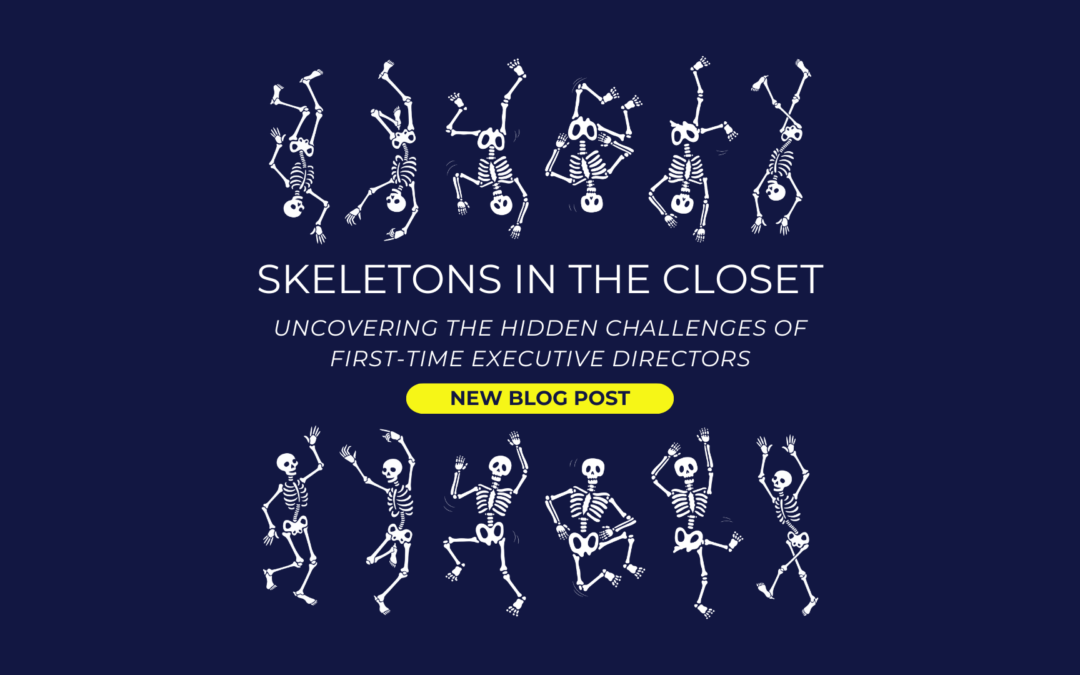Uncovering the Hidden Challenges of First-Time Executive Directors
In my years of consulting and coaching nonprofit leaders, I’ve worked with many first-time Executive Directors (EDs) and let me tell you—stepping into that role for the first time can feel like walking into a haunted house. The unknowns are endless, and unexpected challenges pop up when you least expect them. First-time Executive Directors who are reading this, take pause. You are not alone. There are common struggles that I’ve seen time and again.
The good news? There are solutions for every one of them!
1. The “I Can Do It All” Syndrome
One of the first things I often hear from new Executive Directors (EDs) is that they feel like they have to do everything—manage operations, oversee fundraising, communicate with the board, and lead the team. It’s easy for them to get overwhelmed quickly. The truth is, many EDs walk into the job thinking they can (and should) handle everything on their own, but it doesn’t take long before they’re stretched too thin.
Helpful Tip: Create clear priorities, set boundaries, and empower your team (this includes volunteers!). Delegation isn’t a weakness; it’s a strength, and once you master it, everything else becomes much more manageable.
2. The Ghost of Boards Past

Inheriting a board can be tricky, and many first-time EDs feel haunted by decisions or dynamics they didn’t create. Maybe the previous ED left on bad terms, or perhaps the board is disengaged, making it difficult for new leadership to step in confidently. This can lead to a sense of walking on eggshells, with no real clarity on how to build a working relationship with the board.
Helpful Tip: Meet one-on-one with board members to build an individual relationship with each of them. These meetings will often uncover any hidden concerns or lingering issues from the past. Set clear expectations about your leadership style and vision while also respecting the board’s role in governance. Establishing trust early on, setting the foundation for a collaborative relationship, and transparent communication are all key to clearing those old ghosts.
3. The Case of the Invisible Staff Morale
I’ve seen it happen too often: a new ED takes the reins, only to discover that the staff is frustrated, overworked, or burned out. Low morale can be a real challenge for new leadership, especially when you’re focused on navigating your own transition into the role.
Helpful Tip: Boosting staff morale starts with listening. Creating opportunities for staff to voice their concerns and ideas, whether it’s through team meetings or one-on-ones, can be a game changer. It’s also important to recognize small wins—whether it’s a successful event or just surviving a busy week—and fostering a culture of appreciation. When staff feel valued, they’re much more likely to be engaged and committed to their role in furthering the organization’s mission.
Turning Horror Stories into Success Stories
First-time Executive Directors face a lot of challenges, but with the right tools and guidance, those horror stories can quickly turn into success stories. My goal as a coach and consultant is to help you navigate those early scares with confidence, turning overwhelming moments into opportunities for growth.
So if you’re a first-time Executive Director feeling a bit haunted by your new role, take heart. Every challenge is a chance to grow, and with the right support, you’ll soon be leading your organization toward new heights. After all, every good horror story has a hero—and you’re the one writing this next chapter!
Hat Tip to Your Success,
P.S. Do you want to get updates on our most recent blogs and other free resources we offer? Sign up here for our bi-monthly e-newsletter, The SWGazette.

